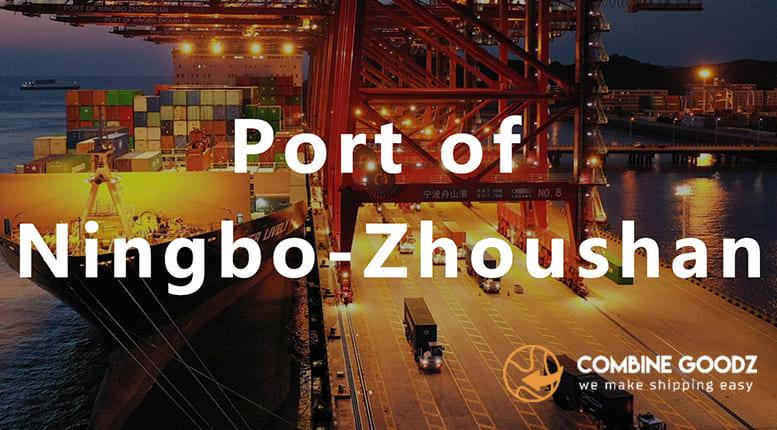
The Port of Ningbo-Zhoushan is a port that is one of the world's busiest cargo hubs, and second largest port in China. Different from Shanghai Port, it is a natural deep-water port located on the coast of the East China Sea, in Zhejiang province on the southeast end of Hangzhou Bay. The port has open to navigation to more than 600 ports in over 100 countries and regions around the world.
In 2020, Ningbo Zhoushan Port completed cargo throughput of 1.172 billion tons, a year-on-year increase of 4.7%, maintaining the world's number one position for the 12th consecutive year; completing container throughput of 28.722 million TEUs, an increase of 4.3% year-on-year, and continued to rank third in the world.
History of Ningbo Zhoushan Port
Ningbo Port was founded in 1738. During the Tang Dynasty (618-907), it was known as one of three major seaports for foreign trade, along with Yangzhou and Guangzhou, under the name "Mingzhou".
After the 1842 Treaty of Nanking, which ended the First Opium War, it was designated as one of the "Five Treaty Ports," along with Guangzhou, Xiamen, Fuzhou, and Shanghai.
In 1978, the central government of China issued the reform and opening-up policy. To speed up the openingup, 14 coastal port cities opened to the outside world in 1984 and Ningbo port was listed of them.
In 2006, the Port of Ningbo was merged with the neighboring Port of Zhoushan to form a combined cargo handling center. In 2012, the combined Ningbo-Zhoushan Port handled 744,000,000 metric tons of cargo, making it the world's largest port in terms of cargo tonnage, surpassing the Port of Shanghai for the first time.
Ningbo Zhoushan Port Facilities and Terminals
The Ningbo-Zhoushan port is a modern comprehensive and multifunctional deepwater port, combining inland, estuary and coastal harbours. It consists of 19 port areas including 5 main port areas i.e. Beilun, Zhenhai, Ningbo old port, Daxie and Chuanshan. Ningbo Zhoushan Port mainly engaged in stevedoring, storage and transfer of imported iron ores, domestic and foreign trade containers, crude oil and product oil, liquid chemical products, coals and other bulk cargos.
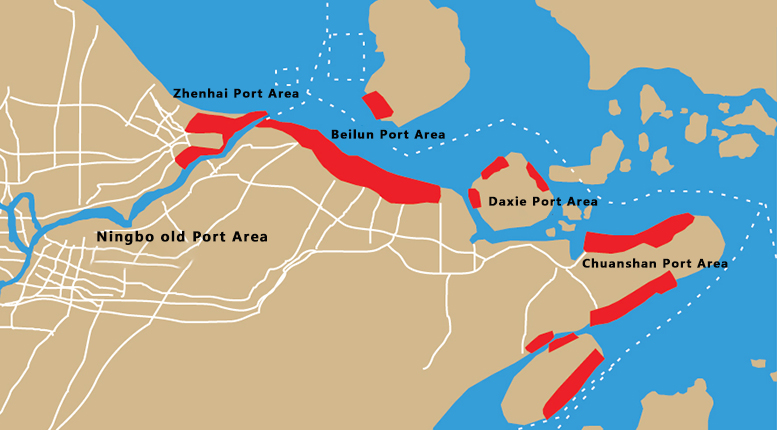
Presently, the Ningbo Zhoushan port has 309 productive berths, including 60 10,000-dwt deep-water berth or above. The largest terminals including a 250,000-dwt crude oil terminal, 200,000-dwt ore stevedoring terminal (also capable of berthing 300,000-dwt ships), the 6th generation specialized international container berth and 50,000-dwt specialized liquid chemical products berth.
Terminal Specifications:
Item | Quantity | Unit |
Port Area | 8,876,700 | M² |
Berth | 309 | - |
Quay Length | 12,774 | Meter |
Designed Capacity | 143,000,000 7,000,000 | Ton/TEU |
Actual Capacity | 182,120,000 9,800,000 | Ton/TEU |
Yard | 5,650,000 | Sq.M |
Storage Capacty | 7,170,000 | Ton |
Container Storage Capacity | 188,000 | TEU |
Throughput Growth in Ningbo-Zhoushan Port
The development of container transport in Ningbo-Zhoushan port has occurred in three stages: (1)Adoption, in which the main dynamics are the impact of the Chinese 'Open Door policy' (1986-2000); (2)Acceleration, in which the dynamics are the impact of mainland China's entry into the WTO (2001-2008); (3)Peak growth, in which the dynamics are the impact of the anti-crisis strategy in response to the 2008 financial and economic crisis (2009-now).
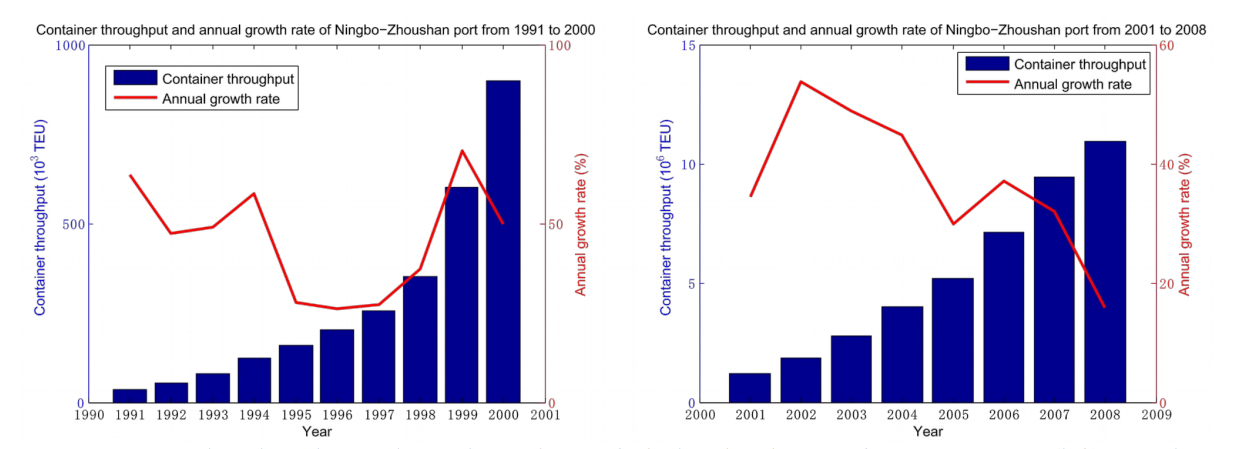
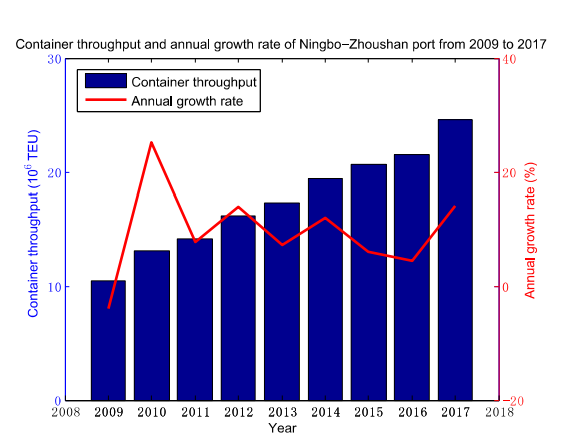
Sources: https://en.wikipedia.org/wiki/Port_of_Ningbo-Zhoushan http://www.nbport.com.cn/gfww/ https://www.reduper.com/industry/traffic/port/ningbo-zhoushan-port/ |

The Port of Ningbo-Zhoushan is a port that is one of the world's busiest cargo hubs, and second largest port in China. Different from Shanghai Port, it is a natural deep-water port located on the coast of the East China Sea, in Zhejiang province on the southeast end of Hangzhou Bay. The port has open to navigation to more than 600 ports in over 100 countries and regions around the world.
In 2020, Ningbo Zhoushan Port completed cargo throughput of 1.172 billion tons, a year-on-year increase of 4.7%, maintaining the world's number one position for the 12th consecutive year; completing container throughput of 28.722 million TEUs, an increase of 4.3% year-on-year, and continued to rank third in the world.
History of Ningbo Zhoushan Port
Ningbo Port was founded in 1738. During the Tang Dynasty (618-907), it was known as one of three major seaports for foreign trade, along with Yangzhou and Guangzhou, under the name "Mingzhou".
After the 1842 Treaty of Nanking, which ended the First Opium War, it was designated as one of the "Five Treaty Ports," along with Guangzhou, Xiamen, Fuzhou, and Shanghai.
In 1978, the central government of China issued the reform and opening-up policy. To speed up the openingup, 14 coastal port cities opened to the outside world in 1984 and Ningbo port was listed of them.
In 2006, the Port of Ningbo was merged with the neighboring Port of Zhoushan to form a combined cargo handling center. In 2012, the combined Ningbo-Zhoushan Port handled 744,000,000 metric tons of cargo, making it the world's largest port in terms of cargo tonnage, surpassing the Port of Shanghai for the first time.
Ningbo Zhoushan Port Facilities and Terminals
The Ningbo-Zhoushan port is a modern comprehensive and multifunctional deepwater port, combining inland, estuary and coastal harbours. It consists of 19 port areas including 5 main port areas i.e. Beilun, Zhenhai, Ningbo old port, Daxie and Chuanshan. Ningbo Zhoushan Port mainly engaged in stevedoring, storage and transfer of imported iron ores, domestic and foreign trade containers, crude oil and product oil, liquid chemical products, coals and other bulk cargos.

Presently, the Ningbo Zhoushan port has 309 productive berths, including 60 10,000-dwt deep-water berth or above. The largest terminals including a 250,000-dwt crude oil terminal, 200,000-dwt ore stevedoring terminal (also capable of berthing 300,000-dwt ships), the 6th generation specialized international container berth and 50,000-dwt specialized liquid chemical products berth.
Terminal Specifications:
Item | Quantity | Unit |
Port Area | 8,876,700 | M² |
Berth | 309 | - |
Quay Length | 12,774 | Meter |
Designed Capacity | 143,000,000 7,000,000 | Ton/TEU |
Actual Capacity | 182,120,000 9,800,000 | Ton/TEU |
Yard | 5,650,000 | Sq.M |
Storage Capacty | 7,170,000 | Ton |
Container Storage Capacity | 188,000 | TEU |
Throughput Growth in Ningbo-Zhoushan Port
The development of container transport in Ningbo-Zhoushan port has occurred in three stages: (1)Adoption, in which the main dynamics are the impact of the Chinese 'Open Door policy' (1986-2000); (2)Acceleration, in which the dynamics are the impact of mainland China's entry into the WTO (2001-2008); (3)Peak growth, in which the dynamics are the impact of the anti-crisis strategy in response to the 2008 financial and economic crisis (2009-now).


Popular Articles

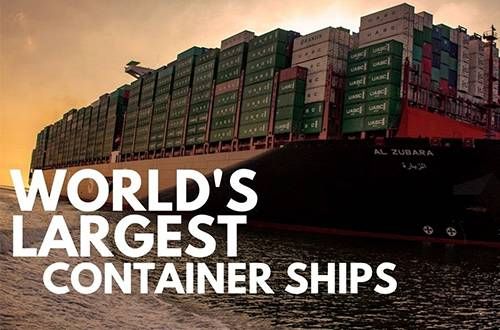
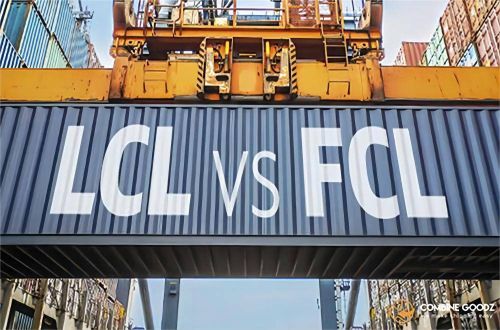
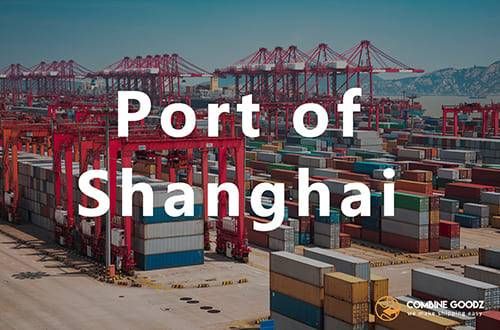
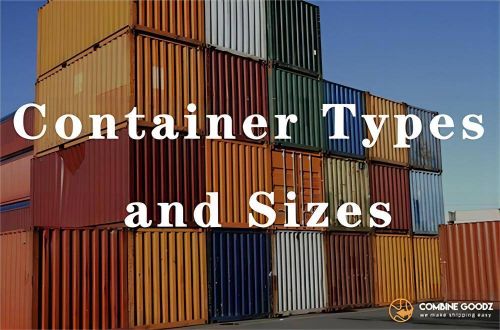
Categories
Share
Prev:Holiday in Vietnam
Next:Mexico Holidays 2022
The latest blogs and insights on what is happening in international transport and logistics.